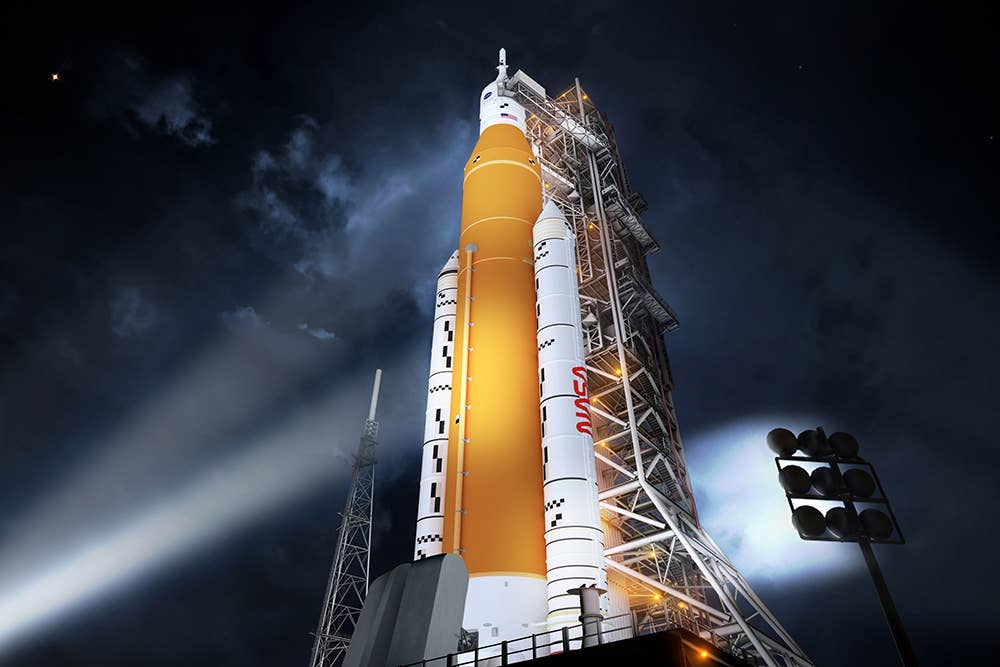NASA’s Mega Moon Rocket to Return to Launch Pad
The SLS is making a comeback after several hardware issues were found during its last wet dress rehearsal.

The next launch window for the SLS begins July 26. [Courtesy: NASA]
NASA’s Space Launch System (SLS) will return to launch pad 39B in early June to reattempt its wet dress rehearsal, according to the agency.
The SLS has seen a handful of delays as a result of two failed wet dress rehearsal attempts, which included various hardware issues. The moon rocket rolled out to launch pad 39B in late March, but returned to the Vehicle Assembly Building (VAB) on April 26, because of a faulty upper stage check valve and a small leak.
“Engineers successfully completed work on a number of items observed during the previous wet dress rehearsal test,” NASA’s statement read. “This includes addressing the liquid hydrogen system leak at the tail service mast umbilical, replacing the interim cryogenic propulsion stage (ICPS) gaseous helium system check valve and support hardware, modifying the ICPS umbilical purge boots, and confirming there are no impacts to Orion as a result of storms and subsequent water intrusion at the launch pad.
“The team also updated software to address issues encountered during core stage tanking of liquid hydrogen and liquid oxygen during previous rehearsal attempts.”
The rocket also encountered a temperature limit issue, which paused the first rehearsal attempt for several hours. The rocket’s propellant, liquid oxygen, must be maintained at minus 297 degrees Fahrenheit.
While NASA was not able to complete its first two attempts, Artemis launch director Charlie Blackwell-Thompson did not consider the test a complete failure.
“There’s a significant amount of test objectives that were completed,” she said.
The next launch window for the SLS begins July 26, with five additional windows scheduled throughout the end of 2022.
Each launch window depends heavily on the moon’s position in its lunar cycle. In its current configuration, the SLS must properly time its trans-lunar injection burn in order to reach the moon’s orbit. According to NASA, the SLS’s future, more powerful configurations will allow for a “near-daily” launch opportunity.
As for the crew capsule, the Orion spacecraft cannot fly in darkness for more than 90 minutes at a time. The spacecraft depends on direct sunlight for power and heat to sustain the astronauts inside.
Depending on the success of the next rehearsal attempt, it is unclear if NASA will attempt a launch during the first window.

Sign-up for newsletters & special offers!
Get the latest FLYING stories & special offers delivered directly to your inbox






